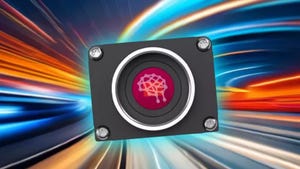January 13, 2010

The expected surge of the solar cell industry in the nextfour years is triggering a wave of new materials technology, particularly forthe protective backsheet, which is usually a multi-film laminate anchored by DuPont's Tedlar fluroropolymerfilm.
"The demands on this composite sheet are particularly high,"says Stefan Tomke, who heads product development at Henkel for laminatingadhesives. "During the 20 to 25 years of its service lifetime, the backsheet isexpected to continuously withstand all the tough weathering conditions to whichit is exposed in its roof-top position."
Extreme hydrolysis is a particular problem, and theadhesives especially need to exhibit enormous resilience. UV resistance is alsoparamount as the backsheet must not be allowed to yellow.
Two-Component Adhesive
"Added to this is the fact that, during the laminatemanufacturing process, the adhesives have to readily withstand temperatures ofup to 150C for periods of 25 to 35 minutes," Tomke says. Henkel developed a newtwo-component adhesive under the Liofil brand that provides thermal resistanceat temperatures of 200C, and provide 2,000 hours of weathering at 85C and 85percent relative humidity without deterioration.
A start-up company in Californiais launchingnew backsheet materials made from plant-based plastics. One film material ismade from castor oil-based nylon 11, while a new cellulosic sheet is made from acotton feedstock. DuPont, meanwhile, is investing $120 million to boostcapacity 50 percent for the resins used to make Tedlar films.
Mitsubishi Plastics has developed an ultra-higher barrierfilm for back sheets used in crystalline silicon solar modules that require ahumidity barrier of 0.2g/m2/day, and one for thin PV cells that needhumidity barrier of 0.02g/m2/day. The Back-Barrier is also beingdeveloped for use in dye-sensitized and organic thin-film solar cells, whichrequire an even higher humidity barrier. Developed in Japan,Mitsubishi's new barrier films rely on a variety of polymer substrates that aretreated with ionized solutions.
Other interesting advances are also taking place inadhesive. Henkel's Emerson & Cuming brand developed ECCOBONDTMCA 3556 HF for high throughput solar cell production processes. The newadhesive creates a flexible electrically conductive bond with high peelstrength and long term. 
New Adhesives, Films Boost Photovoltaic Effectiveness A
About the Author(s)
You May Also Like





